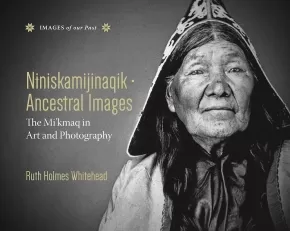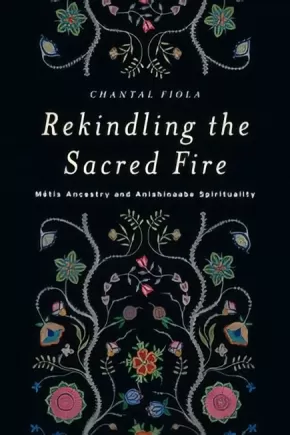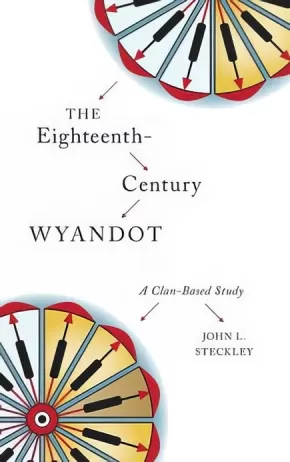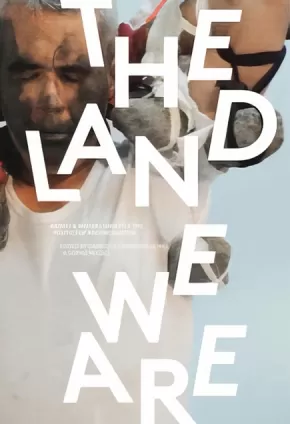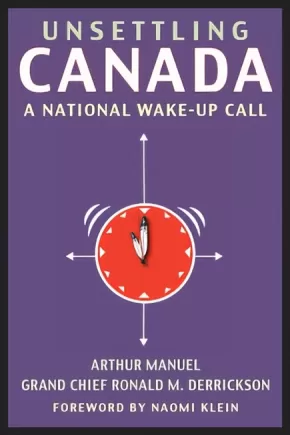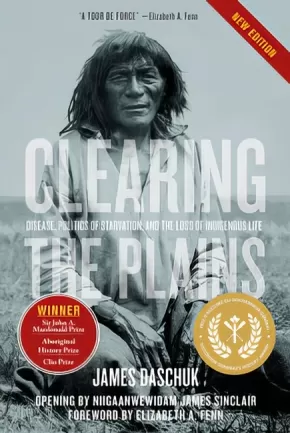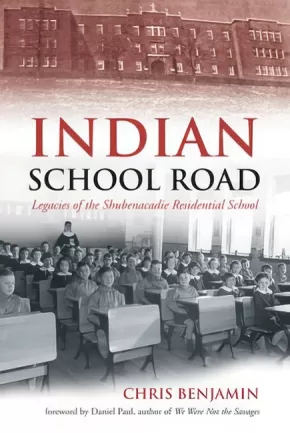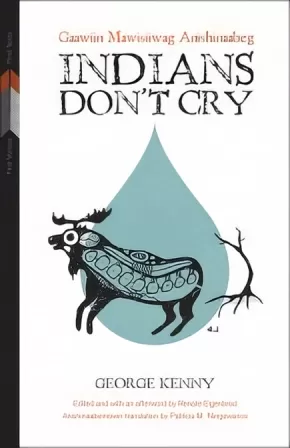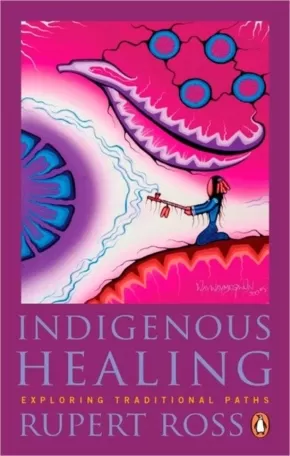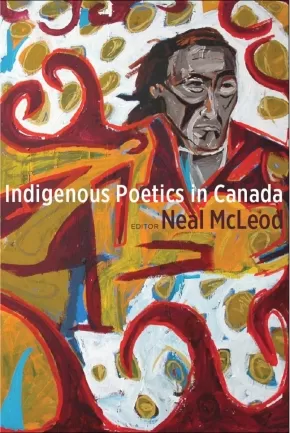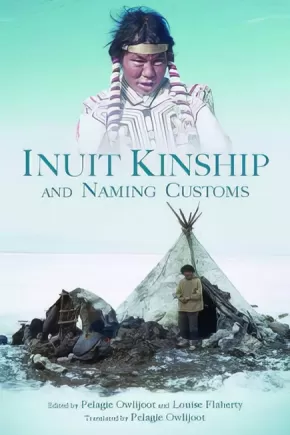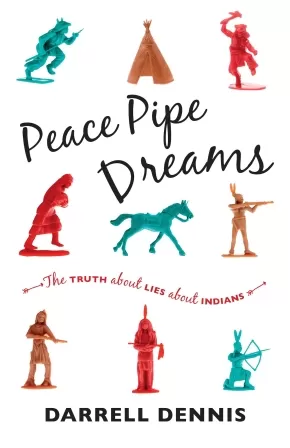
History
271
-
285
of
336 Results;
Sort By
Go To
of 23
Niniskamijinaqik / Ancestral Images: The Mi'kmaq in Art and Photography
$29.95
Format:
Hardcover
Text Content Territories:
Indigenous Canadian; First Nations; Mi'kmaq;
ISBN / Barcode: 9781771082631
Synopsis:
Synopsis:
The Mi’kmaq of Atlantic Canada were here for thousands of years before the arrival of European peoples. Niniskamijinaqik / Ancestral Images: The Mi’kmaq in Art and Photography presents their unique culture and way of life through the remarkable and sometime complex lives of individuals, as depicted in artwork or photography.
The opening images in this collection were created by the Mi’kmaq themselves: portrayals of human beings carved into the rock formations of Nova Scotia. Then there are the earliest surviving European depictions of Mi’kmaq, decorations on the maps of Samuel de Champlain. Finally we see portraits of Mi’kmaw individuals, ancestors in whom we see their “humanity frozen in the stillness of a photograph,” as the writers of the book’s foreword describe.
Niniskamijinaqik / Ancestral Images includes 94 compelling pieces of art and photography, chosen from more than a thousand extant portraits in different media, that show the Mi’kmaw people. Each image is an entry point to deeply personal history, a small moment or single person transformed into vivid immediacy for the reader.
Additional Information
128 pages | 10.00" x 8.00" | b&w photographs
Rekindling the Sacred Fire: Métis Ancestry and Anishinaabe Spirituality
$27.95
Format:
Paperback
Text Content Territories:
Indigenous Canadian; Métis; First Nations; Anishinaabeg;
ISBN / Barcode: 9780887557705
Synopsis:
Synopsis:
Why don’t more Métis people go to traditional ceremonies? How does going to ceremonies impact Métis identity? In Rekindling the Sacred Fire, Chantal Fiola investigates the relationship between Red River Métis ancestry, Anishinaabe spirituality, and identity, bringing into focus the ongoing historical impacts of colonization upon Métis relationships with spirituality on the Canadian prairies. Using a methodology rooted in Anishinaabe knowledge and principles along with select Euro-Canadian research practices and tools, Fiola’s work is a model for indigenized research.
Fiola’s interviews of people with Métis ancestry, or an historic familial connection to the Red River Métis, who participate in Anishinaabe ceremonies, shares stories about family history, self-identification, and their relationships with Aboriginal and Euro-Canadian cultures and spiritualities. This study seeks to understand the historical suppression of Anishinaabe spirituality among the Métis and its more recent reconnection that breaks down the colonial divisions between their cultures.
The Eighteenth-Century Wyandot: A Clan-Based Study
$43.99
Format:
Paperback
Text Content Territories:
Indigenous American; Native American; Huron-Wendat (Ouendat); Indigenous Canadian; First Nations; Huron-Wendat (Ouendat);
Grade Levels: University/College;
ISBN / Barcode: 9781771122009
Synopsis:
Synopsis:
The Wyandot were born of two Wendat peoples encountered by the French in the first half of the seventeenth century—the otherwise named Petun and Huron—and their history is fragmented by their dispersal between Quebec, Michigan, Kansas, and Oklahoma. This book weaves these fragmented histories together, with a focus on the mid-eighteenth century.
Author John Steckley claims that the key to consolidating the stories of the scattered Wyandot lies in their clan structure. Beginning with the half century of their initial diaspora, as interpreted through the political strategies of five clan leaders, and continuing through the eighteenth century and their shared residency with Jesuit missionaries—notably, the distinct relationships different clans established with them—Steckley reveals the resilience of the Wyandot clan structure. He draws upon rich but previously ignored sources—including baptismal, marriage, and mortuary records, and a detailed house-to-house census compiled in 1747, featuring a list of male and female elders—to illustrate the social structure of the people, including a study of both male and female leadership patterns. A recording of the 1747 census as well as translated copies of letters sent between the Wyandot and the French is included in an appendix.
Paperback: 316 pages
Physical Dimensions: 6.00" x 9.00"
The Land We Are: Artists and Writers Unsettle the Politics of Reconciliation
$24.95
Editors:
Format:
Paperback
Text Content Territories:
Indigenous Canadian;
ISBN / Barcode: 9781894037631
Synopsis:
Synopsis:
The Land We Are is a stunning collection of writing and art that interrogates the current era of reconciliation in Canada. Using visual, poetic, and theoretical language, the contributors approach reconciliation as a problematic narrative about Indigenous-settler relations, but also as a site where conversations about a just future must occur. The result of a four-year collaboration between artists and scholars engaged in resurgence and decolonization, The Land We Are is a moving dialogue that blurs the boundaries between activism, research, and the arts.
The contributors to this book include leading artists and scholars engaged in questions of resurgence, restitution, and decolonization.
Contributors: Jordan Abel, Leah Decter, Jonathan Dewar, David Garneau, Ayumi Goto, Allison Hargreaves, Gabrielle L'Hirondelle Hill, Jaimie Isaac, David Jefferess, Layli Long Soldier, The New BC Indian Art and Welfare Society Collective, Sophie McCall, Peter Morin, Skeena Reece, Dylan Robinson, Sandra Semchuk, Adrian Stimson, Clement Yeh, and Keren Zaiontz.
Reviews
"This beautifully produced, richly illustrated volume not only offers readers a visual journey into the featured artistic installations and performance pieces, but through its creative use of text and graphic design is itself an artistic statement on reconciliation." --Winnipeg Free Press
Educator Information
Recommended for students in grades 11 and 12, as well as at a college/university level.
Additional Information
240 pages | 6.50" x 9.50"
Unsettling Canada: A National Wake-Up Call
$29.95
Format:
Paperback
Text Content Territories:
Indigenous Canadian;
ISBN / Barcode: 9781771131766
Synopsis:
Synopsis:
Unsettling Canada, a Canadian bestseller, is built on a unique collaboration between two First Nations leaders, Arthur Manuel and Grand Chief Ron Derrickson.
Both men have served as chiefs of their bands in the B.C. interior and both have gone on to establish important national and international reputations. But the differences between them are in many ways even more interesting. Arthur Manuel is one of the most forceful advocates for Aboriginal title and rights in Canada and comes from the activist wing of the movement. Grand Chief Ron Derrickson is one of the most successful Indigenous businessmen in the country.
Together the Secwepemc activist intellectual and the Syilx (Okanagan) businessman bring a fresh perspective and new ideas to Canada’s most glaring piece of unfinished business: the place of Indigenous peoples within the country’s political and economic space. The story is told through Arthur’s voice but he traces both of their individual struggles against the colonialist and often racist structures that have been erected to keep Indigenous peoples in their place in Canada.
In the final chapters and in the Grand Chief’s afterword, they not only set out a plan for a new sustainable indigenous economy, but lay out a roadmap for getting there.
Reviews
“This is the back story of both grassroots and backroom struggles that created the context in which we find ourselves today, one in which a new generation of First Nations leaders is demanding sovereignty and self-determination, and more and more non-Indigenous Canadians finally understand that huge swaths of this country we call Canada is not ours - or our government's - to sell.” — Naomi Klein, from the Foreword
“Pragmatic and helpful, this is a timely book for our fraught and political moment” — Quill & Quire
"Unsettling Canada is a breathtakingly beautiful story of Indigenous resistance, strength, and movement building. Unsettling Canada echoes the power of George Manuel's The Fourth World, centering the heart of the narrative deep inside a kind of Indigenous intelligence rarely shared outside our communities. This is the critical conversation that Canada and Indigenous peoples must have because it is centred on land, and, therefore, it is one of the most important books on Indigenous politics I've ever read." — Leanne Betasamosake Simpson, author of Dancing on Our Turtle's Back
Educator Information
This resource would be useful for courses in history, social justice, political science, and social studies. Recommended for students in grades 10 to 12 or those at a college/university level.
CONTENTS
Foreword Naomi Klein
Chapter 1 The Lay of the Land
Chapter 2 Institutionalizing a People: Indian Hospital, School, Jail
Chapter 3 White Paper to Red Paper: Drawing the Battle Lines
Chapter 4 Occupy Indian Affairs: Native Youth in Action
Chapter 5 Aboriginal Title: No Surrender
Chapter 6 The Constitution Express: A Grassroots Movement
Chapter 7 Don’t Let Them Bully You: A Business Interlude
Chapter 8 A Chief’s Concerns: Finances, the People, and the Land
Chapter 9 Upping the Ante: RCAP and a Landmark Court Decision
Chapter 10 The Battle in the Forest: The Trade in Indian Trees
Chapter 11 Sun Peaks to Geneva: Playgrounds and Fortresses
Chapter 12 Taking It to the Bank: Accounting for Unpaid Debt
Chapter 13 The Fourth World: A Global Movement
Chapter 14 Line of Defence: Side by Side for Mother Earth
Chapter 15 No Half Measures: The Price of Uncertainty
Chapter 16 Days of Protest: Young Activists Come Together
Chapter 17 The End of Colonialism
Afterword Grand Chief Ronald M. Derrickson
Acknowledgements
Appendix United Nations Declaration on the Rights of Indigenous Peoples
Notes
Index
Additional Information
288 pages | 6.00" x 9.00"
Unsettling Canada: A National Wake-Up Call - Second Edition
$29.95
Format:
Paperback
Text Content Territories:
Indigenous Canadian;
ISBN / Barcode: 9781771135566
Synopsis:
Synopsis:
A Canadian bestseller and winner of the 2016 Canadian Historical Association Aboriginal History Book Prize, Unsettling Canada is a landmark text built on a unique collaboration between two First Nations leaders.
Arthur Manuel (1951-2017) was one of the most forceful advocates for Indigenous title and rights in Canada; Grand Chief Ron Derrickson, one of the most successful Indigenous businessmen in the country. Together, they bring a fresh perspective and bold new ideas to Canada's most glaring piece of unfinished business: the place of Indigenous peoples within the country's political and economic space.
This vital second edition features a foreword by award-winning activist Naomi Klein and an all-new chapter co-authored by law professor Nicole Schabus and Manuel's son, Ska7cis, honouring the multi-generational legacy of the Manuel family's work.
Reviews
“Pragmatic and helpful, this is a timely book for our fraught and political moment” — Quill & Quire
"Unsettling Canada is a breathtakingly beautiful story of Indigenous resistance, strength, and movement building. Unsettling Canada echoes the power of George Manuel's The Fourth World, centering the heart of the narrative deep inside a kind of Indigenous intelligence rarely shared outside our communities. This is the critical conversation that Canada and Indigenous peoples must have because it is centred on land, and, therefore, it is one of the most important books on Indigenous politics I've ever read." — Leanne Betasamosake Simpson, author of Dancing on Our Turtle's Back
Educator Information
This resource would be useful for courses in history, social justice, political science, and social studies. Recommended for students in grades 10 to 12 or those at a college/university level.
Additional Information
320 pages | 6.00" x 9.00"
Ancient Pathways, Ancestral Knowledge: Ethnobotany and Ecological Wisdom of Indigenous Peoples of Northwestern North America
$150.00
Format:
Hardcover
Text Content Territories:
Indigenous American; Indigenous Canadian;
Reading Level: N/A
ISBN / Barcode: 9780773543805
Synopsis:
Synopsis:
How knowledge of plants and environments has been applied and shared over centuries and millennia by Indigenous peoples.
Volume 1: The History and Practice of Indigenous Plant Knowledge
Volume 2: The Place and Meaning of Plants in Indigenous Cultures and Worldviews
Nancy Turner has studied Indigenous peoples' knowledge of plants and environments in northwestern North America for over forty years. In Ancient Pathways, Ancestral Knowledge, she integrates her research into a two-volume ethnobotanical tour-de-force. Drawing on information shared by Indigenous botanical experts and collaborators, the ethnographic and historical record, and from linguistics, palaeobotany, archaeology, phytogeography, and other fields, Turner weaves together a complex understanding of the traditions of use and management of plant resources in this vast region. She follows Indigenous inhabitants over time and through space, showing how they actively participated in their environments, managed and cultivated valued plant resources, and maintained key habitats that supported their dynamic cultures for thousands of years, as well as how knowledge was passed on from generation to generation and from one community to another. To understand the values and perspectives that have guided Indigenous ethnobotanical knowledge and practices, Turner looks beyond the details of individual plant species and their uses to determine the overall patterns and processes of their development, application, and adaptation.
Volume 1 presents a historical overview of ethnobotanical knowledge in the region before and after European contact. The ways in which Indigenous peoples used and interacted with plants - for nutrition, technologies, and medicine - are examined. Drawing connections between similarities across languages, Turner compares the names of over 250 plant species in more than fifty Indigenous languages and dialects to demonstrate the prominence of certain plants in various cultures and the sharing of goods and ideas between peoples. She also examines the effects that introduced species and colonialism had on the region's Indigenous peoples and their ecologies.
Volume 2 provides a sweeping account of how Indigenous organizational systems developed to facilitate the harvesting, use, and cultivation of plants, to establish economic connections across linguistic and cultural borders, and to preserve and manage resources and habitats. Turner describes the worldviews and philosophies that emerged from the interactions between peoples and plants, and how these understandings are expressed through cultures’ stories and narratives. Finally, she explores the ways in which botanical and ecological knowledge can be and are being maintained as living, adaptive systems that promote healthy cultures, environments, and indigenous plant populations.
Ancient Pathways, Ancestral Knowledge both challenges and contributes to existing knowledge of Indigenous peoples' land stewardship while preserving information that might otherwise have been lost. Providing new and captivating insights into the anthropogenic systems of northwestern North America, it will stand as an authoritative reference work and contribute to a fuller understanding of the interactions between cultures and ecological systems.
Educator Information
Table of Contents
Volume One
Figures and Tables ix
Preface and Acknowledgments xv
Note on the Writing System Used in This Book xxxi
1 Introduction to the Book: Ethnobotanical and Ethnoecological Knowledge across Time and Space 3
Part One | History
2 Into the Past: Ancient Relationships among People, Plants, and Environments 43
3 Reflections on Plant Names in Understanding the History of People-Plant Relationships 117
4 Change, Loss, and Adaptation of Plant Traditions 191
Part Two | Development
5 Plants as Food: Development, Diversity, Dissemination 263
6 Plant Use in Technology over Time and Space 335
7 Herbal Medicine and Healing Traditions 415
Appendix 1: Major Sources of Information for the Book 467
Appendix 2: Names of Selected Native Plant Species in Indigenous Languages of Northwestern North America 473
Appendix 3: Names of Two Introduced Plants (Turnip and Potato) in Indigenous Languages of Northwestern North America 507
Notes 515
Volume Two
Figures and Tables ix
Preface xiii
Part Three - Integration and ManaGement
8 Moving for the Harvest: Seasonal Rounds and Plant Knowledge 3
9 Cultural Institutions Related to Ethnobotanical Knowledge and Practice 51
10 Trade and Exchange: Sharing Plant Products and Ethnobotanical Knowledge across Geographical and Cultural Space 101
11 Management and Sustainability of Plant Resources and Habitats 145
Part Four - UnderlyinG Philosophy
12 Narratives in Transmission of Ethnobotanical Knowledge 231
13 Worldview and Belief Systems in Ethnobotanical Knowledge Systems 297
14 Ancient Pathways and New Pathways for Retaining and Renewing Botanical and Environmental Knowledge Systems for the Future 351
Notes 413
References 441
Index of Plant Species 503
General Index 513
Additional Information
1056 pages | 6.00" x 9.00" | Hardcover
Clearing the Plains: Disease, Politics of Starvation, and the Loss of Indigenous Life
$27.95
Format:
Paperback
Text Content Territories:
Indigenous Canadian;
ISBN / Barcode: 9780889776227
Synopsis:
Synopsis:
Revealing how Canada's first Prime Minister used a policy of starvation against Indigenous people to clear the way for settlement, the multiple award-winning Clearing the Plains sparked widespread debate about genocide in Canada.
In arresting, but harrowing, prose, James Daschuk examines the roles that Old World diseases, climate, and, most disturbingly, Canadian politics—the politics of ethnocide—played in the deaths and subjugation of thousands of Indigenous people in the realization of Sir John A. Macdonald’s "National Dream."
It was a dream that came at great expense: the present disparity in health and economic well-being between Indigenous and non-Indigenous populations, and the lingering racism and misunderstanding that permeates the national consciousness to this day.
This new edition of Clearing the Plains has a foreword by Pulitzer Prize winning author, Elizabeth Fenn, an opening by Niigaanwewidam James Sinclair, and explanations of the book’s influence by leading Canadian historians. Called “one of the most important books of the twenty-first century” by the Literary Review of Canada, it was named a “Book of the Year” by The Globe and Mail, Quill & Quire, the Writers’ Trust, and won the Sir John A. Macdonald Prize, among many others.
Reviews
"Clearing the Plains is a tour de force that dismantles and destroys the view that Canada has a special claim to humanity in its treatment of indigenous peoples. Daschuk shows how infectious disease and state-supported starvation combined to create a creeping, relentless catastrophe that persists to the present day. The prose is gripping, the analysis is incisive, and the narrative is so chilling that it leaves its reader stunned and disturbed. For days after reading it, I was unable to shake a profound sense of sorrow. This is fearless, evidence-driven history at its finest." —Elizabeth A. Fenn, author of Pox Americana
"Required reading for all Canadians." —Candace Savage, author of A Geography of Blood
"Clearly written, deeply researched, and properly contextualized history...Essential reading for everyone interested in the history of indigenous North America." —J.R. McNeill, author of Mosquito Empires
Additional Information
386 pages | 6.00" x 9.00" | 25 b&w photos, 7 maps and figures | Paperback
First Nations of British Columbia: An Anthropological Overview, Third Edition
$29.95
Format:
Paperback
Text Content Territories:
Indigenous Canadian; First Nations;
ISBN / Barcode: 9780774828734
Synopsis:
Synopsis:
The First Nations of British Columbia, now in its third edition, is a concise and accessible overview of BC's First Nations peoples, cultures, and issues. Robert J. Muckle familiarizes readers with the history, diversity, and complexity of First Nations to provide a context for contemporary concerns and initiatives. This latest edition of the classic work has been fully revised, with new chapters added and previous ones rewritten, arguments reframed in light of current developments, and resources brought right up to date. The First Nations of British Columbia is an indispensable resource for teachers and students and an excellent introduction for anyone interested in BC First Nations.
Indian School Road: Legacies of the Shubenacadie Residential School
$25.95
Format:
Paperback
Text Content Territories:
Indigenous Canadian; First Nations; Mi'kmaq;
ISBN / Barcode: 9781771082136
Synopsis:
Synopsis:
In Indian School Road, journalist Chris Benjamin tackles the controversial and tragic history of the Shubenacadie Indian Residential School, its predecessors, and its lasting effects, giving voice to multiple perspectives for the first time. Benjamin integrates research, interviews, and testimonies to guide readers through the varied experiences of students, principals, and teachers over the school’s nearly forty years of operation (1930–1967) and beyond. Exposing the raw wounds of Truth and Reconciliation as well as the struggle for an inclusive Mi’kmaw education system, Indian School Road is a comprehensive and compassionate narrative history of the school that uneducated hundreds of Aboriginal children.
Indians Don't Cry: Gaawiin Mawisiiwag Anishinaabeg
$24.95
Text Content Territories:
Indigenous Canadian; First Nations; Anishinaabeg;
ISBN / Barcode: 9780887557699
Synopsis:
Synopsis:
George Kenny is an Anishinaabe poet and playwright who learned traditional ways from his parents before being sent to residential school in 1958. When Kenny published his first book, 1977’s Indians Don’t Cry, he joined the ranks of Indigenous writers such as Maria Campbell, Basil Johnston, and Rita Joe whose work melded art and political action. Hailed as a landmark in the history of Indigenous literature in Canada, this new edition is expected to inspire a new generation of Anishinaabe writers with poems and stories that depict the challenges of Indigenous people confronting and finding ways to live within urban settler society.
Educator & Series Information
Indians Don’t Cry: Gaawin Mawisiiwag Anishinaabeg is the second book in the First Voices, First Texts series, which publishes lost or underappreciated texts by Indigenous artists. This new bilingual edition includes a translation of Kenny’s poems and stories into Anishinaabemowin by Patricia M. Ningewance and an afterword by literary scholar Renate Eigenbrod.
Although most of the books in this series are non-fiction, this one is listed as fiction.
Additional Information
190 pages | 5.50" x 8.50"
Indigenous Healing: Exploring Traditional Paths
$24.00
Format:
Paperback
Text Content Territories:
Indigenous Canadian;
Reading Level: N/A
ISBN / Barcode: 9780143191100
Synopsis:
Synopsis:
Imagine a world in which people see themselves as embedded in the natural order, with ethical responsibilities not only toward each other, but also toward rocks, trees, water and all nature. Imagine seeing yourself not as a master of Creation, but as the most humble, dependent and vulnerable part.
Rupert Ross explores this indigenous world view and the determination of indigenous thinkers to restore it to full prominence today. He comes to understand that an appreciation of this perspective is vital to understanding the destructive forces of colonization. As a former Crown Attorney in northern Ontario, Ross witnessed many of these forces. He examines them here with a special focus on residential schools and their power to destabilize entire communities long after the last school has closed. With help from many indigenous authors, he explores their emerging conviction that healing is now better described as “decolonization therapy.” And the key to healing, they assert, is a return to the traditional indigenous world view.
The author of two previous bestsellers on indigenous themes, Dancing with a Ghost and Returning to the Teachings, Ross shares his continuing personal journey into traditional understanding with all of the confusion, delight and exhilaration of learning to see the world in a different way.
Ross sees the beginning of a vibrant future for indigenous people across Canada as they begin to restore their own definition of a “healthy person” and bring that indigenous wellness into being once again. Indigenous Healing is a hopeful book, not only for indigenous people, but for all others open to accepting some of their ancient lessons about who we might choose to be.
Additional Information
344 pages | 5.25" x 8.20" | Paperback
Indigenous Poetics in Canada
$38.99
Editors:
Format:
Paperback
Text Content Territories:
Indigenous Canadian;
Grade Levels: University/College;
ISBN / Barcode: 9781554589821
Synopsis:
Synopsis:
Indigenous Poetics in Canada broadens the way in which Indigenous poetry is examined, studied, and discussed in Canada. Breaking from the parameters of traditional English literature studies, this volume embraces a wider sense of poetics, including Indigenous oralities, languages, and understandings of place.
Featuring work by academics and poets, the book examines four elements of Indigenous poetics. First, it explores the poetics of memory: collective memory, the persistence of Indigenous poetic consciousness, and the relationships that enable the Indigenous storytelling process. The book then explores the poetics of performance: Indigenous poetics exist both in written form and in relation to an audience. Third, in an examination of the poetics of place and space, the book considers contemporary Indigenous poetry and classical Indigenous narratives. Finally, in a section on the poetics of medicine, contributors articulate the healing and restorative power of Indigenous poetry and narratives.
Awards
- 2014 ACQL Gabrielle Roy Prize for Literary Criticism winner.
Reviews
"Indigenous Poetics in Canada is that rare book of scholarship that speaks to the heart and spirit as well as the mind. The selections in this collection offer powerful individual and collective insight into the ways that diverse traditions of Indigenous poetics animate our imaginative possibilities and extend our cultural understandings across time, space, and difference. To study Indigenous poetics is to be forcefully reminded of both our historical traditions and their continuing significance, and the poets, writers, scholars, and story-makers featured in this volume are among the most eloquent and insightful voices on the topic today. This is a transformative intervention in Indigenous literary studies as well as the broader canon of Canadian literature, reminding us that questions of aesthetics are always in dynamic relationship with the lived experience of our politicized imaginations in the world."— Daniel Heath Justice (Cherokee Nation), April 2014
"Conversations about Indigenous literatures will be forever enriched by this stunning new collection. Here, the leading voices in Indigenous literary studies draw upon deep currents of inspiration—both ancient and contemporary—as they reflect upon and powerfully perform the act of re-making the world through language. Joyful, humbling, and wonderfully diverse, Indigenous Poetics in Canada welcomes readers and writers into a re-indigenized rhetorical landscape-and I cannot wait to see what takes place there.'"— Keavy Martin, April 2014
"In a fine introduction, McLeod does an admirable job of framing the essays and interviews to come while giving readers less familiar with indigenous poetics insight into some of the tropes and rhetorical strategies practitioners use, including kiskino (‘things...pointed to, but never completely articulated’), kakêskihkêmowina
(‘counselling narratives’), and aniskwâcimopicikêwin (‘the process of connecting stories together’). That this collection exists is at once a challenge to the white publishing world that has long refused to recognize indigenous poetic practices as ‘poetry’ and a testament to the health and vibrancy of the living word of indigenous consciousness.... Summing up: Highly recommended."— B. Carson, Choice, December 2014, December 2014
Educator Information
This book would be useful for the following subject areas or courses: Indigenous Studies, Poetry, Canadian Literature, and Literary Criticism.
Additional Information
416 pages | 6.00" x 9.00"
Edited by Neal McLeod.
Inuit Kinship and Naming Customs (1 in stock, in reprint)
$19.95
Format:
Paperback
Text Content Territories:
Indigenous Canadian; Inuit;
ISBN / Barcode: 9781927095713
Synopsis:
Synopsis:
Traditionally, Inuit do not call each other by their given names. Instead, they refer to each other using a system of kinship and family terms, known as tuqurausiit (turk-thlo-raw-seet). Calling each other by kinship terms is a way to show respect and foster closeness within families. Children were named after their elders and ancestors, ensuring a long and healthy life.
As more and more Inuit refer to each other by their English first names, rather than their traditional kinship terms, the tradition of tuqurausiit is slowly disappearing. This book presents interviews with four Inuit elders from Baffin Region, Nunavut, about how names were chosen, the importance of using kinship terms, and how the practice of tuqurausiit has changed over the years. Inuit Kinship and Naming Customs helps to preserve the knowledge of this tradition for younger generations, both Inuit and non-Inuit.
Additional Information
|
Peace Pipe Dreams
$22.95
Format:
Paperback
Text Content Territories:
Indigenous Canadian; Métis; Inuit; First Nations;
ISBN / Barcode: 9781771000406
Synopsis:
Synopsis:
In 2015-2016, Peace Pipe Dreams was the award recipient for First Nation Communities Read.
Darrell Dennis is a stereotype-busting, politically incorrect Native American/Aboriginal/Shuswap (Only he's allowed to call himself an "Indian." Maybe. Under some circumstances). With a large dose of humour and irreverence, he untangles some of the truths and myths about First Nations: Why do people think Natives get free trucks, and why didn't he ever get one? Why does the length of your hair determine whether you’re good or bad? By what ratio does the amount of rain in a year depend on the amount of cactus liquor you consume?
In addition to answering these burning questions, Dennis tackles some tougher subjects. He looks at European-Native interactions in North America from the moment of first contact, discussing the fur trade, treaty-signing and the implementation of residential schools. Addressing misconceptions still widely believed today, Dennis explains why Native people aren't genetically any more predisposed to become alcoholics than Caucasians; that Native religion doesn't consist of worshipping rocks, disappearing into thin air, or conversing with animals; and that tax exemptions are so limited and confusing that many people don't even bother.
Employing pop culture examples, personal anecdote and a cutting wit, Darrell Dennis deftly weaves history with current events to entertain, inform and provide a convincing, readable overview of First Nations issues and why they matter today.
Additional Information
224 pages | 5.65" x 8.52"
Sort By
Go To
of 23

